From the moment the mighty river enters Egypt, it travels approximately 1,000 miles / 1,609 kilometres till it reaches its final destination, the Mediterranean. Without the Nile, there would not be Egypt, the Pyramids, Karnak, or any of the massive monuments that we see today. Egypt would have been just a part of the great Sahara.
In ancient times, Egypt was mostly ruled from the south, specifically from what we now call Luxor. Sadly the importance of Upper Egypt waned through millennia, and power shifted from the South all the way to the Delta and Alexandria, to finally settle in Cairo. That is the main reason for the wealth of archaeological sites and finds in the south of Egypt and along the Nile Valley.
Life hasn’t changed much here, farmers still farm the same way their ancestors did, they still use the same names for the same tools, villages have had the same names for hundreds of years.
Due to the size and number of governorates along the Nile Valley, this guide is going to be split into three parts: 1) Middle Egypt; 2) Qena and Luxor; 3) Aswan and Nubia.
Aswan
Egypt’s gateway from the south; the Nile flows pure enough here that you can dip your hand in it and have a sip, here is where all the granite that built the greatest temples and pyramids came from, Egypt’s hottest, driest inhabited city… Welcome to Aswan.
Aswan is far removed from the hustle and bustle of its neighbour to the north, Luxor. Its lifestyle is far more relaxed than that of Cairo or any other major city in Egypt, for the most part Aswan and its environs are inhabited by Nubians, some of the friendliest, most honest people one can meet. A lot of Arab tribes moved to Aswan with the advent of the Islamic conquest.
About 80km south of Luxor on the east bank of the Nile, is Al-Kab, the walled Pharaonic settlement of Nekheb, an important urban centre from Pre-Dynastic times to Ptolemaic times, Its massive mud-brick walls, dating to the Late Period (747-332 BCE) and still largely preserved, enclosed an area of about 25,000 sq. m., and is thought to have been built by Nectanebo II as a defensive measure. Within the walls are the ruins of two temples, the Temple of Nekhbet and the Temple of Thoth.
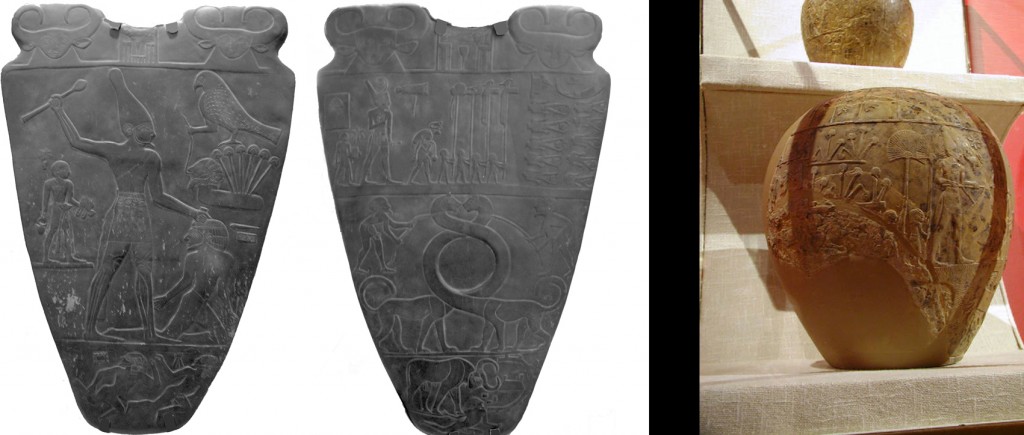
(Left) The Palette of Narmer. (Right) The Scorpion Macehead belonging to King Scorpion. Wikimedia Commons.
Across the river, on the west bank of the Nile, is Al-Kom Al-Ahmar (Red Mound), the ancient city of Nekhen, known to the Greeks as Hierakonopolis (City of the Falcon). It flourished during the late Pre-Dynastic and early Dynastic periods (4000-2686 BCE); it may have been Egypt’s first administrative capital of the Two Lands based on the very famous Palette of Narmer and the Scorpion Macehead that were discovered there. Source: The Rough Guide to Egypt.
Edfu, Silsilah, and Kom Ombo
Further upriver, about 115km from Luxor, on the west bank of the Nile, is the provincial town of Edfu. An agricultural centre, it houses the most completely preserved Egyptian temple; the Temple of Horus. Although the temple stays true to Ancient Egyptian art, architecture, and grandeur – down to the attire worn by the Greek Pharaohs, it is in fact Ptolemaic, started by Ptolemy III in 237 BCE and finished almost 200 years later in 57 BCE by Ptolemy XII, Cleopatra VII’s father. It is a must see for visitors to Upper Egypt.
42km south of Edfu at Silsilah, the Nile narrows considerably passing between steep sandstone cliffs, known to Ancient Egyptians as Khenu (Place of Rowing), rapids must have existed here during times of inundation. It marks the change in the bedrock, from Limestone to Sandstone.
A little further south lies Kom Ombo, Known as Nubt (City of Gold) for the ancient Egyptians. The town’s location on the Nile 50 km north of Aswan (Syene) gave it some control over trade routes from Nubia to the Nile Valley, but its main rise to prominence came with the erection of the temple in the 2nd century BCE, the unusual dual Temple of Sobek/Haroeris.
The peculiar nature of the temple is due to the fact that architecturally everything is doubled and symmetrical along the main axis of the building, the northern half is dedicated to Haroeris (Horus the Elder) and the southern half to Sobek, the local crocodile god. It was started by Ptolemy VI Philometor (180-145 BCE) and was added to well into Roman times.
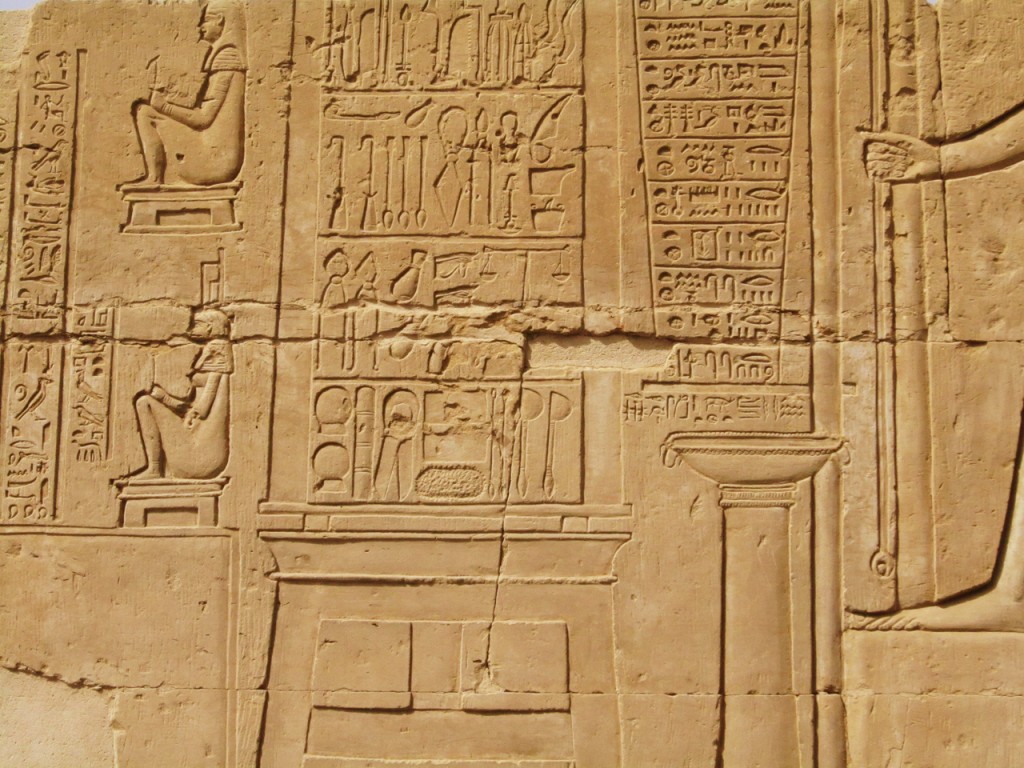
Medical instruments image at the Temple of Kom Ombo, showing also prescriptions and two goddesses sitting on birthing chairs. Wikimedia Commons.
Another curiosity about the Temple of Kom Ombo is the rare engraved image of what is thought to be the first representation of medical instruments for performing surgery, including scalpels, curettes, forceps, dilator, scissors and medicine bottles dating from the days of Roman Egypt. Source.
Daraw and its Camel Market mark the entry into Nubia. Daraw is the end of the 40 Days Road for the Camels and it’s the principal camel market between Dongola and Cairo. The other attraction here is the gorgeous Beit Al-Kenzi, built in 1912 by the grandfather of the current owner in the traditional Nubian style. It was built to remind the descendants of the ancestral village that drowned with the building of the first Aswan Dam.
Aswan (Syene)
The city of Aswan, or Syene as it was known to the Greeks, was at the frontier of Egypt, and it remained a garrison well into Roman and Coptic times. It was the gateway to Africa. The city of Aswan itself does not have the level of monuments that Luxor has, not a lot of temples, but what it has is not available anywhere else in Egypt. It’s laid-back and pleasant and its ambiance is very relaxed.
Also known as Swenet in Ancient Egyptian and Swān in Coptic, Aswan is home to several unforgettable sights: Elephantine Island, Kitchener’s Island, the Unfinished Obelisk, the Nubia Museum, the Bazaar, Sehel Island, and The Tombs of the Nobles on the west bank. Add to all the previous sites the-impossible-to-beat experience of a felucca ride in Aswan and you would have a vacation that is not going to be forgotten soon.
The Nubia Museum and The Unfinished Obelisk are both on the east bank of the Nile. The Nubia Museum was designed by the late Egyptian architect Mahmoud al-Hakim, and Mexican architect Pedro Vasquez Ramirez designed the museum’s interior display, it won the Agha-Khan Award of Architecture 2001. It opened its doors to the public in 1998, and the building is loosely based on Nubian architecture and it houses around 5000 artefacts that were saved when Lake Nasser was formed, the plan was that these artefacts should be kept as close as possible to their principal places of origin.
The quarries of Aswan were the main source of granite used for statues, temples, and obelisks of Ancient Egypt. The Unfinished Obelisk is a magnificent sight to see, standing next to it, and learning how the Ancient Egyptians, with their primitive tools managed to hew granite and shape it into what we see today is nothing short of awe inspiring. Three sides of the massive discarded obelisk – nearly 42m long – were completed except for the inscriptions, had it been completed it would have weighed 1,168 tonnes, the single heaviest piece of stone ever fashioned. A flaw appeared in the rock and it was subsequently discarded by the stonemasons, with no hint or clue left for what this obelisk was intended for. Source: Lonely Planet Egypt Travel Guide.
The Bazaar of Aswan is second only to Cairo’s Khan Al-Khalili; Sharia’ Al-Souq (Market Street) runs parallel to the Corniche, it’s a pleasure to wander around taking in all the smells and colours of the market, from spices and herbs to traditional Nubian and African wares on display. Unfortunately, one cannot escape the assault of the souvenir shops with their supply of their sub-par made-in-china goods.
For ancient geographers, Aswan was of great interest, they believed that it was seated immediately under the tropic of the Cancer, and that on the day of the summer solstice, a vertical staff cast no shadow. They noted that the sun’s disc was reflected in a well at noon. Sadly, the exact location of that well has been lost to us. Source.
Eratosthenes of Cyrene – Greek mathematician, poet, athlete, geographer, astronomer, and music theorist – used measurements at Aswan (Syene) to determine the circumference of Earth, using Syene as the originating point and Alexandria as the terminal point of a measured arc (based on shadow length at the solstice).
The Nile is dotted with islands all the way, but nowhere in Egypt are the Nile islands more dramatic than in Aswan; the major islands downriver from the Aswan Low Dam are: Sehel, Saluga, Ambunarti, Elephantine, and then Kitchener’s Island, with a dozen smaller islands scattered around them. Directly across from the city of Aswan are the islands of Elephantine and Kitchener’s Island, Elephantine being the larger of the two.
Elephantine, known in Ancient Egypt as Yebu or Abu, stood at the border between Egypt and Nubia. It was an excellent defensive site for a city and its location made it a natural cargo transfer point for river trade. In the 5th century BCE a Jewish garrison was stationed on the island in 650 BCE during Manasseh of Judah‘s reign to assist Pharaoh Psammetichus I in his Nubian campaign, as discovered from the Elephantine Papyri. Another major discovery is a rare calendar, known as the Elephantine Calendar of Things, dating to the reign of Thutmose III. Source.
The island is home to a massive resort with an ugly control tower-like structure, two Nubian villages – Siou and Koti – nestled in the middle of lush palm groves, and further south are the Aswan Museum, once the rest house of Sir William Willcocks, the architect of the Aswan Low Dam, it has been a museum since 1912, with an extension added t it in the 1990s. Beyond the museum are the ruins of Yebu, the highlights being the largest structure in the site, the reconstructed Temple of Khnum, built in the Old Kingdom, and the 4th century BCE step pyramid thought to have been built by Sneferu. However the most famous and impressive of the sites are the two Nilometers, one located the temple of Khnum, and the other inside the Statet Temple. They were they gave the first indication of the inundation of the Nile, and they did so until the building of Aswan’s High Dam.
To the west of Elephantine is Kitchener’s Island, given to Lord Horatio Kitchener in the 1890s as a thank-you for his services in the Sudan Campaign (1896-1898). With the aid of the Ministry of Irrigation, Kitchener rapidly transformed the small island into a paradise of exotic trees and plants and carefully planned walkways. Source.
Approximately half-way between Elephantine and the Aswan Low Dam is Sehel island with its granite boulder inscriptions left by travellers marking the beginning or the end of their journeys to Nubia, one famous inscription is the Famine Stela recording the events from the time of Djoser and Imhotep, it dates back to Ptolemaic times.
The high cliffs opposite Aswan on the west bank are honeycombed with the Tombs of the Nobles; the princes, governors, keepers of the Gate of the South, and other high officials of ancient Syene and Elepantine. Currently, only six of them are open to the public.
Beyond the Aswan Low Dam lays the island of Philae, now almost completely flooded under the Nile, it was the previous site of an Ancient Egyptian temple complex dedicated to Isis – the Island itself was held sacred as one of the burying places of Osiris. For six months out of the year the building was partially submerged under water after the building of the Aswan Low Dam, and it remained so for over 50 years. In the 1960s with the approaching completion of the Aswan high Dam, a rescue operation by UNESCO and EAO was initiated to relocate the temple, and, between 1972 and 1980 every building was dismantled and transported to the nearby island of Agilika and reconstructed 20m higher, the island was even landscaped to resemble the original island of Philae.
The island is home to several smaller temples, not just the complex dedicated to Isis, and the Sound and Light show is reckoned by most to be more tasteful than others in Egypt and definitely worth a visit.
Nubia
Beyond Aswan’s High Dam lays the ancient lands of Nubia, now for the most part forever submerged under the waters of Lake Nasser thanks to the dam, and with it the Nubian way of life.
Some Nubian tribes relocated north of the dam to Aswan, while others relocated much further south to the furthest boundaries of their lands in Sudan. The most important of the temples located in the area that Lake Nasser now occupies were disassembled in a massive rescue operation by UNESCO and relocated to higher grounds on nearby Islands that were not submerged; some were even given to other nations!
New Kalabsha
New Kalabsha, a headland located one kilometre just south of the High Dam, houses several important temples, structures, and other remains that have been relocated here from the site of Old Kalabsha. The major temple at the new locations is the Roman built Temple of Kalabsha (Temple of Mandulis), considered to be the largest free-standing temple in Nubia. It was started in Ptolemaic times and completed during the reign of Emperor Augustus, between 30 BCE and 14 CE.
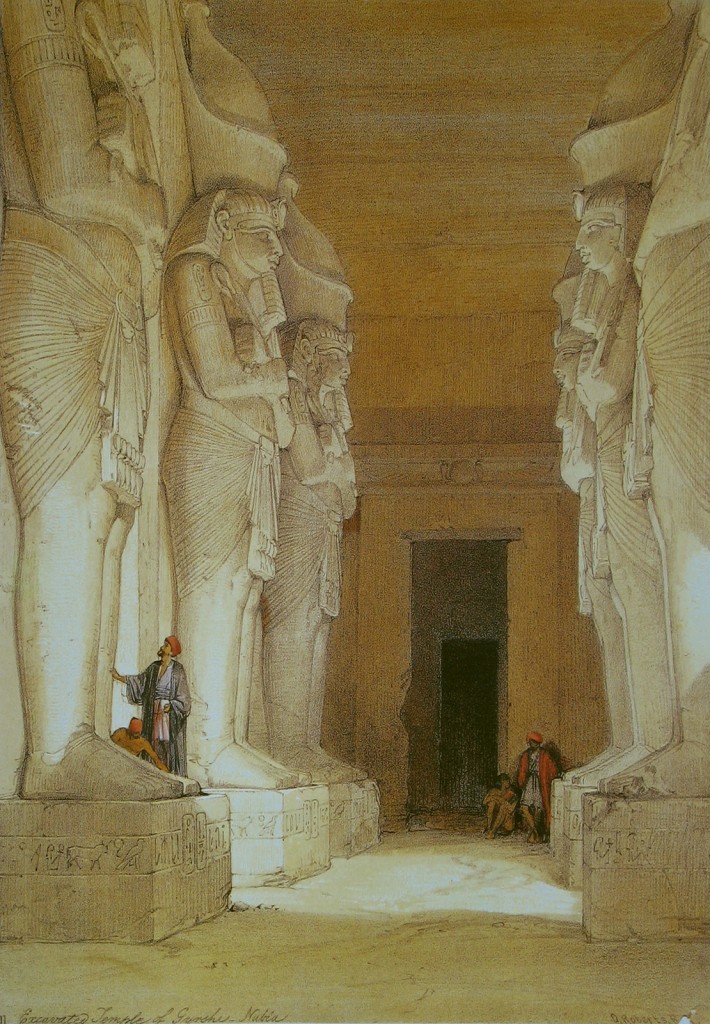
Painting of the interior of the rock-cut temple of Gerf Hussein by David Roberts (1846-1849); that section is now submerged beneath the waters of Lake Nasser. Wikimedia Commons.
Other sites on New Kalabsha include: Gerf Hussein, originally known as Per Ptah, the “House of Ptah”) is dedicated to Ramesses II by his Viceroy of Nubia Setau. It was partially free-standing and partially rock-cut. Most of the rock-cut temple was left in place and is now submerged beneath Lake Nasser.
Beit Al-Wali, The rock-cut temple of Beit Al-Wali (House of the Holy Man) was moved from its original location by a Polish archaeological team. Built by Ramesses II to establish and maintain Egyptian control over the area, along with his temples at Wad Al-Seboua and Abu Simbel.
Kiosk of Qertassi, a small but elegant Roman kiosk contemporary of Trajan’s Kiosk at Philae, only four of the original 16 columns remain inside, while two Hathor columns remain at the entrance, the Kiosk was never finished. Sources: Wikipedia, The Rough Guide to Egypt, Lonely Planet Egypt Travel Guide.
New Wadi Al-Seboua
Not all temples were relocated to higher ground, there are two that were relocated to other countries altogether; the Greco-Roman Temple off Isis at Dabod now stands the Parque del Oeste, near the royal palace of Madrid, while the Roman Temple of Dendur has been exhibited in the Metropolitan Museum of Art in New York since 1978. Source: Cadogan Guides: Cairo, Luxor, Aswan.
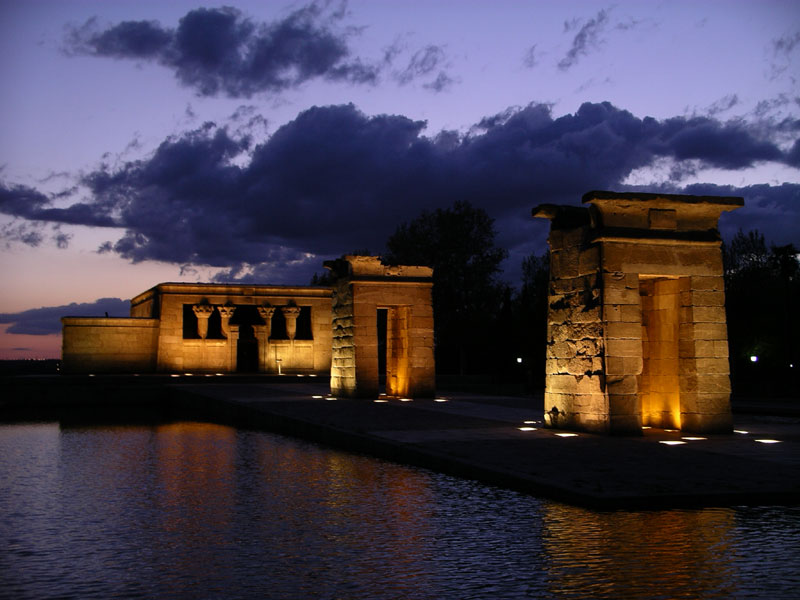
The Temple of Dabod at the Parque del Oeste, near the royal palace of Madrid, opened to the public in 1972. Wikimedia Commons.
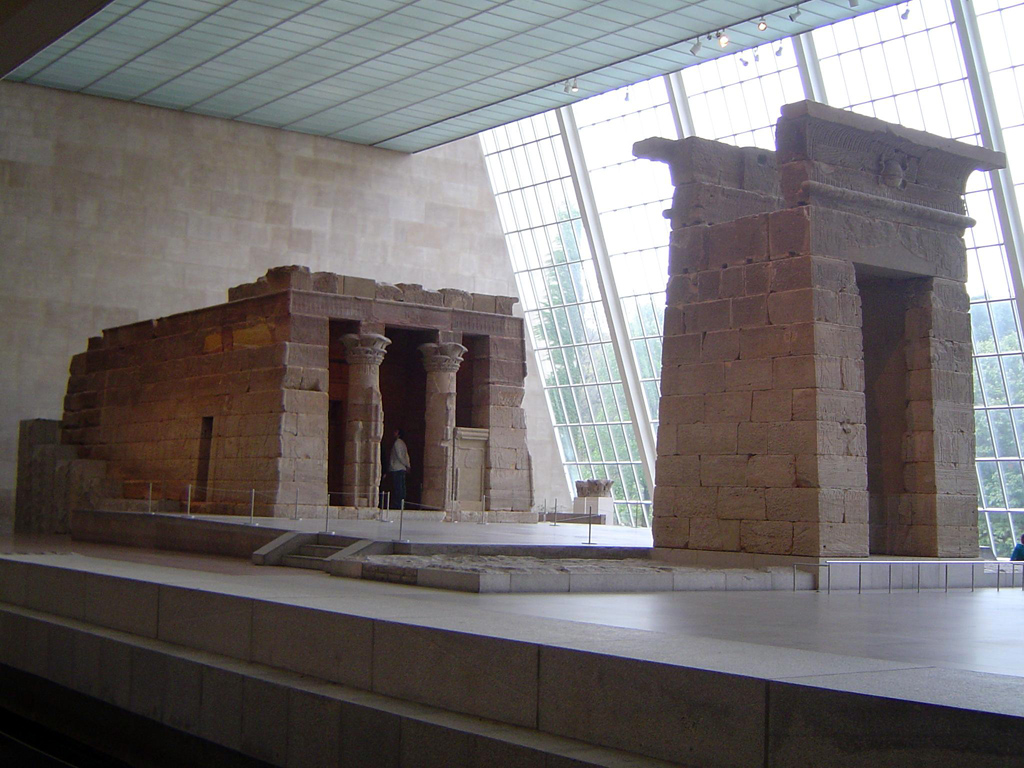
The Temple of Dendur, exhibited in the Metropolitan Museum of Art in New York since 1978. Wikimedia Commons.
New Wadi Al-Seboua, 150km south of the High Dam, has been the new home for three temples since the early 1960s: the Temple of Wadi Al-Seboua (Valley of the Lions) was another temple built for Ramesses II by his Viceroy of Nubia Setau; The Greco-Roman Temple of Dakka, dedicated to Thoth, has been faithfully aligned- north-south, was begun by the Nubian King Arkamani and continued under Ptolemy IV, VIII, and IX, and finished by the Roman Emperors Augustus and Tiberius. The northernmost and smallest of the three temples is the Roman Temple of Mahrraqa, in ancient times it marked the southern frontier of Roman Egypt, it was never completed, and it’s most interesting feature is the spiral staircase leading to the roof, it is the only one of its kind in an ancient Egyptian building.
New Amada and Qasr Ibrim
As with a lot of the monuments in Nubia, the temples of Amada and Derr were relocated to New Amada 180km south of the High Dam between 194 and 1975.
The Temple of Amada is the oldest surviving monument on Lake Nasser, dating back to the 18th dynasty; it was built by Tuthmosis III and his son Amenhotep II, with later additions by Tuthmosis IV and later Ramessid additions. With all its war related inscriptions, it is likely it was meant to assert to the Nubians the futility of rising against Egypt.
Yet another temple built by Ramsses II, the Temple of Derr like others built by the late Pharaoh portrayed him as a living god, with many scenes depicting him smiting his enemies.
Qasr Ibrim, or the Castle of Ibrim, is the only major archaeological site in Lower Nubia to have survived the Nile floods. Both prior to and after the Nile floods, it has remained a major site for archaeological investigations. It is also the only one to survive in its original location. The site is still undergoing heavy archaeological work and is closed to visitors; however, cruise ships moor close enough to view the site with binoculars or a good camera.
Abu Simbel
One of Egypt’s top tourist attraction, and a testament to Ramsses II’s ego and pride, the two colossal temples at Abu Simbel were carved into the mountainside in the 13th century BCE, they were designed to be a lasting monument to himself and his queen Nefertari. Built to commemorate his alleged victory at the Battle of Kadesh, and as with the other temples built in Nubia by Ramsses II, it was also meant to intimidate the Nubians.
Abu Simbel is located 230km southwest of Aswan (about 300 km by road), and the the complex is part of the UNESCO World Heritage Site known as the “Nubian Monuments“.
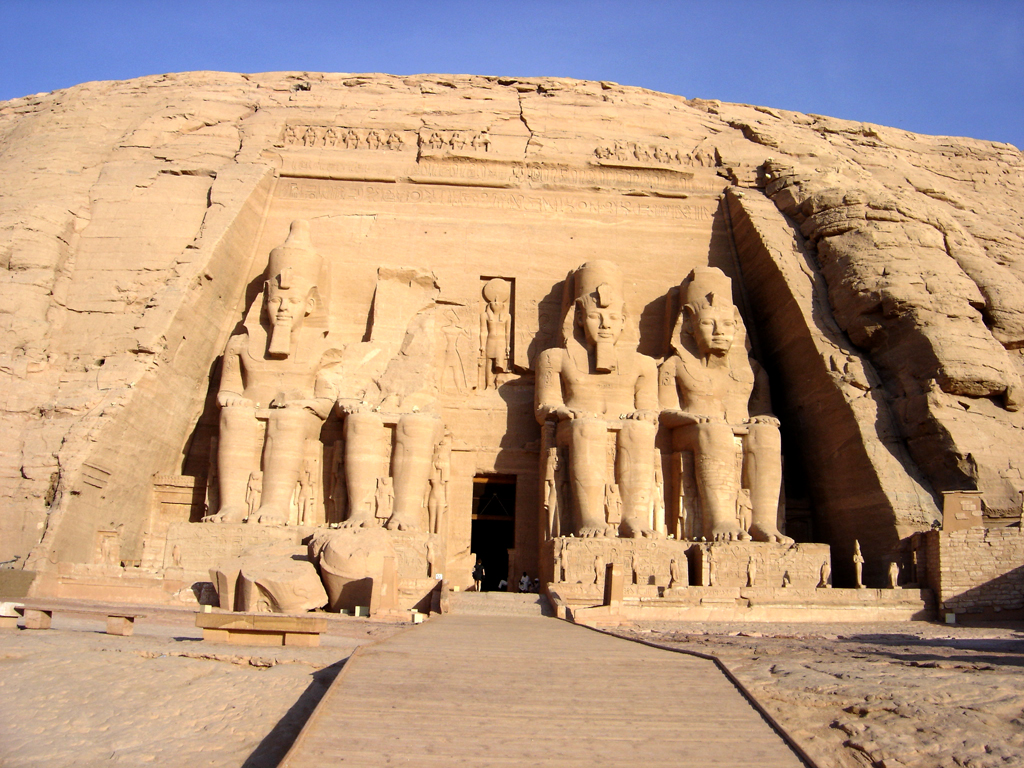
The Great Temple at Abu Simbel with the four 20m colossi of Ramsses II decorating its entrance. By akiernan, sotck.xchng.
The temple was relocated to higher grounds in 1968 to save it from the rising waters of the Nile in a feat of engineering that qualifies as one of the wonders of the modern world.
Over the centuries with the shifting sands, the temples of Abu Simbel were lost to memory, only to be rediscovered by chance in 1813 by Swiss explorer Jean-Louis Burkhardt; then in 1817 enough sand was cleared by Italian explorer Givanni Belzoni for the temple to be entered.
The great temple was dedicated to the gods Amun, Ra-Horakhty, and Ptah, as well as to the deified Ramsses II himself. It is generally considered the grandest and most beautiful of the temples commissioned during the reign of Rameses II, and one of the most beautiful in Egypt. The smaller Temple of Hathor and Nefertari, is the only temple in Ancient Egypt where the statues of the king and his consort are equal in size.

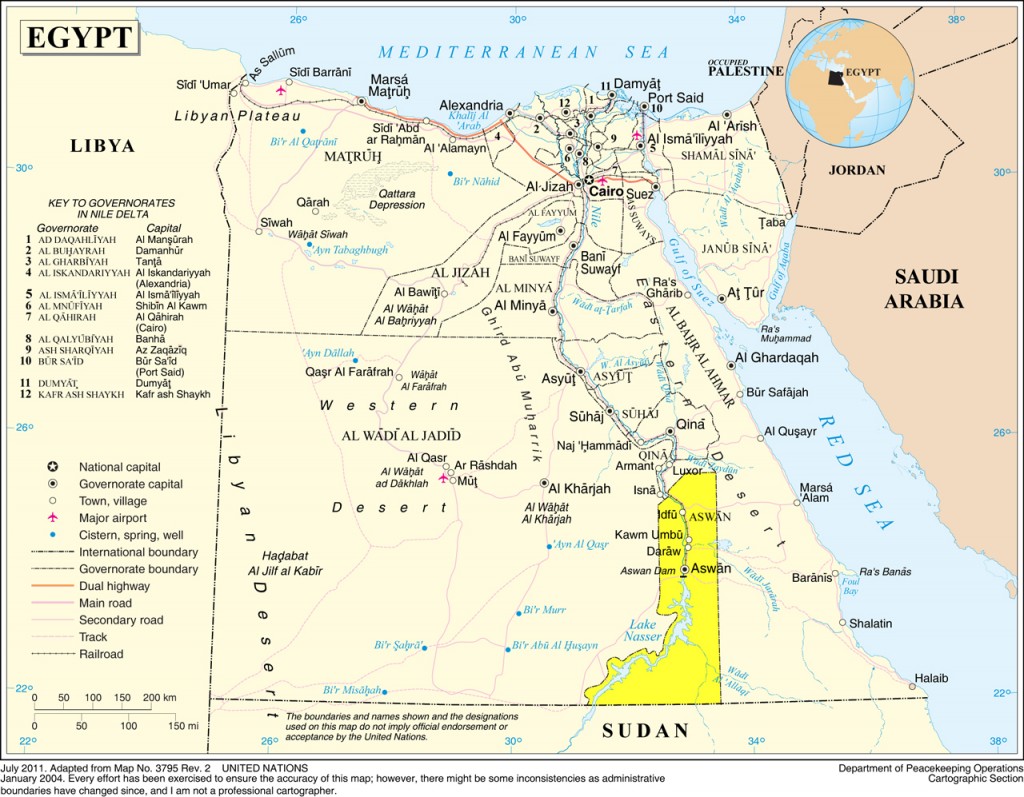
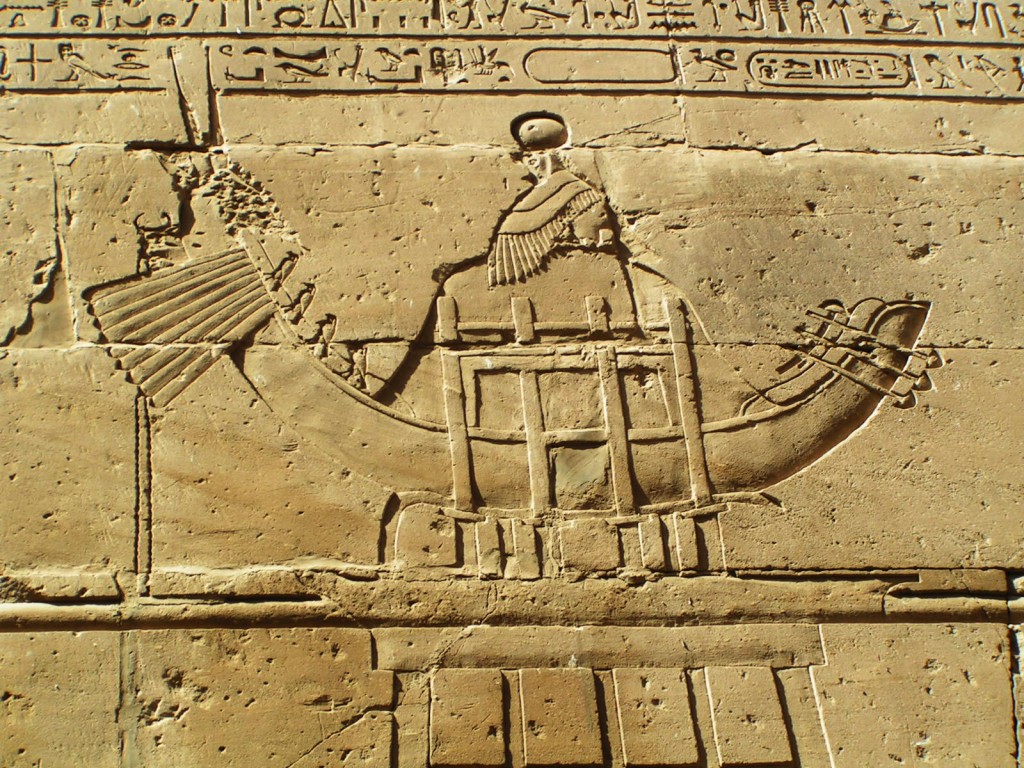
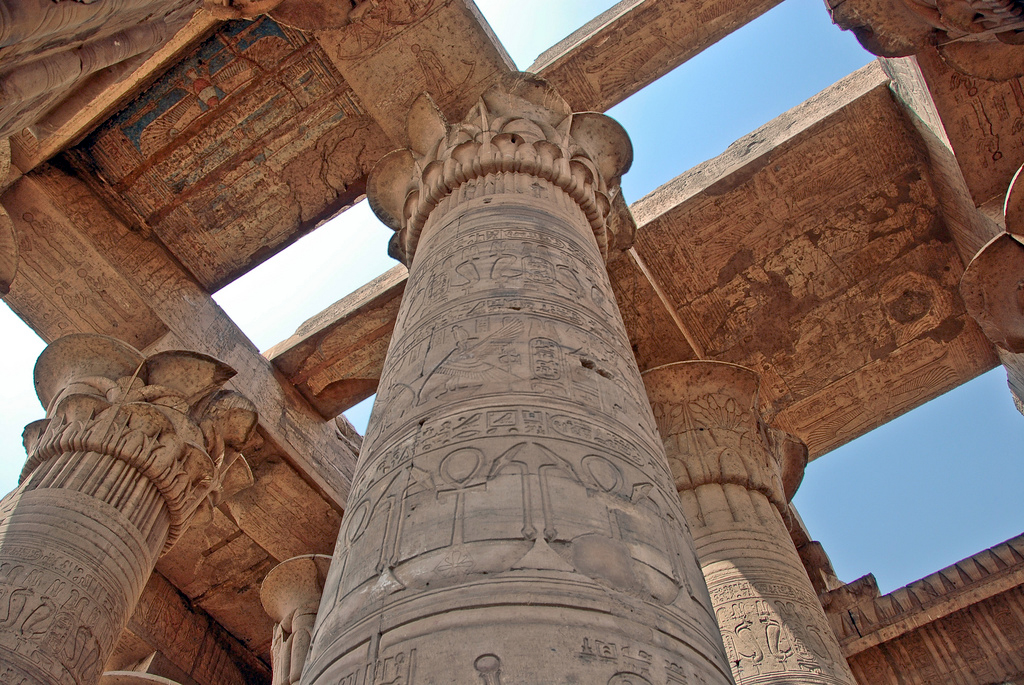
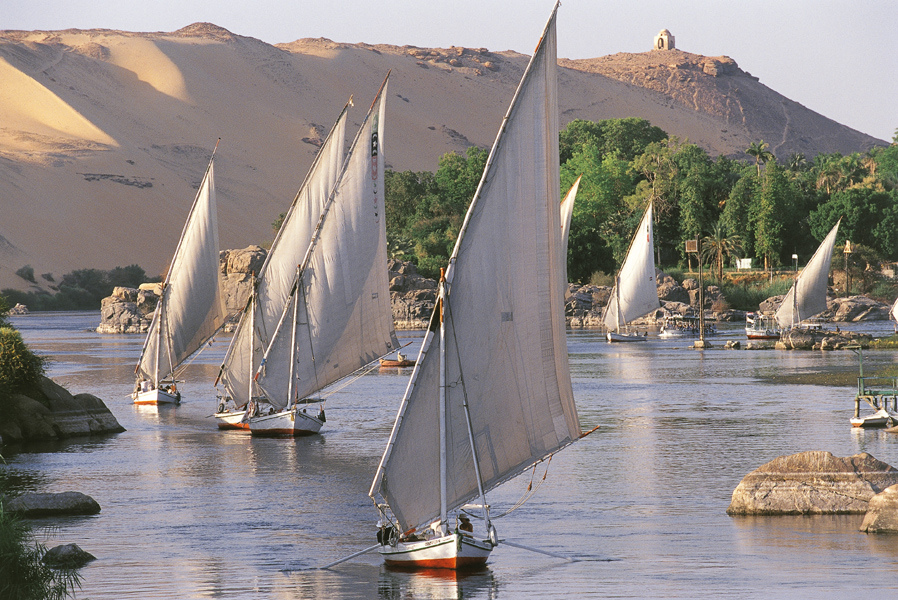
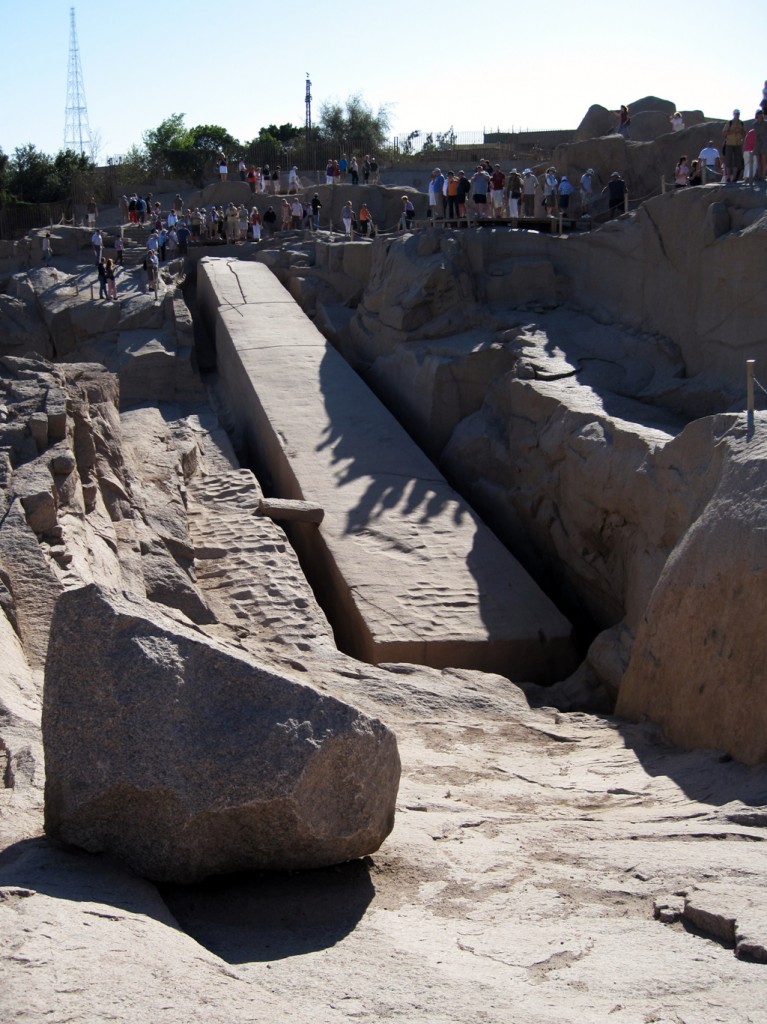
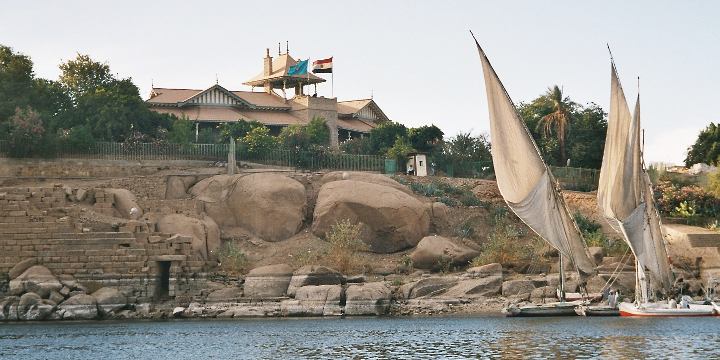
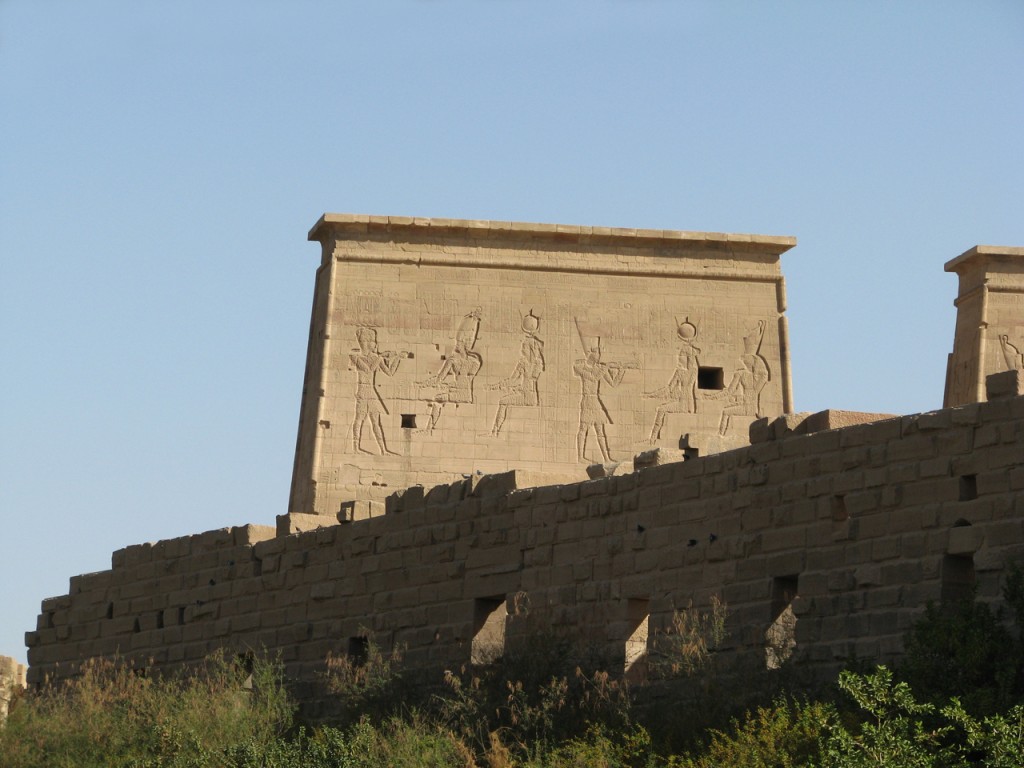








You are very welcome…
Thank you for this.